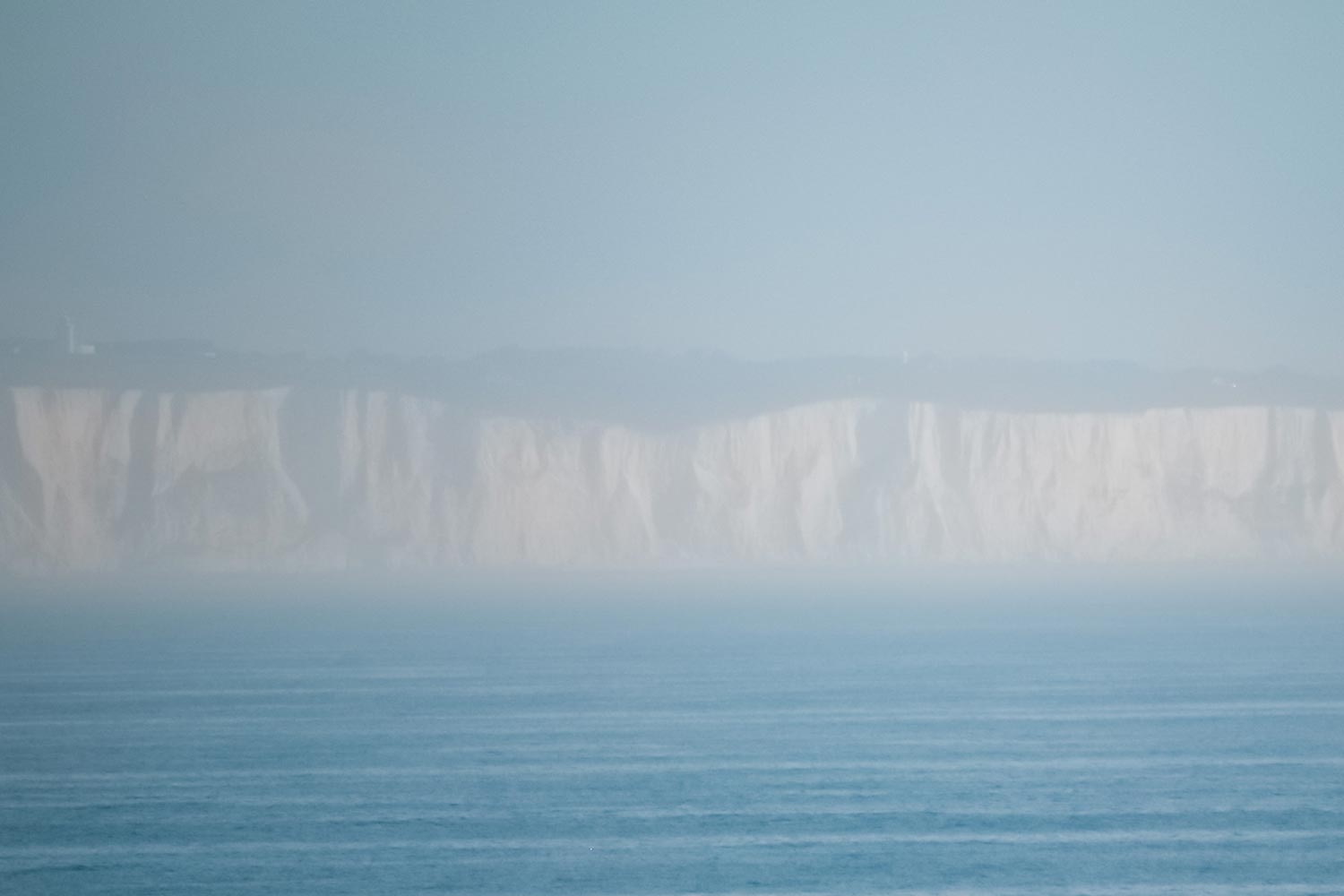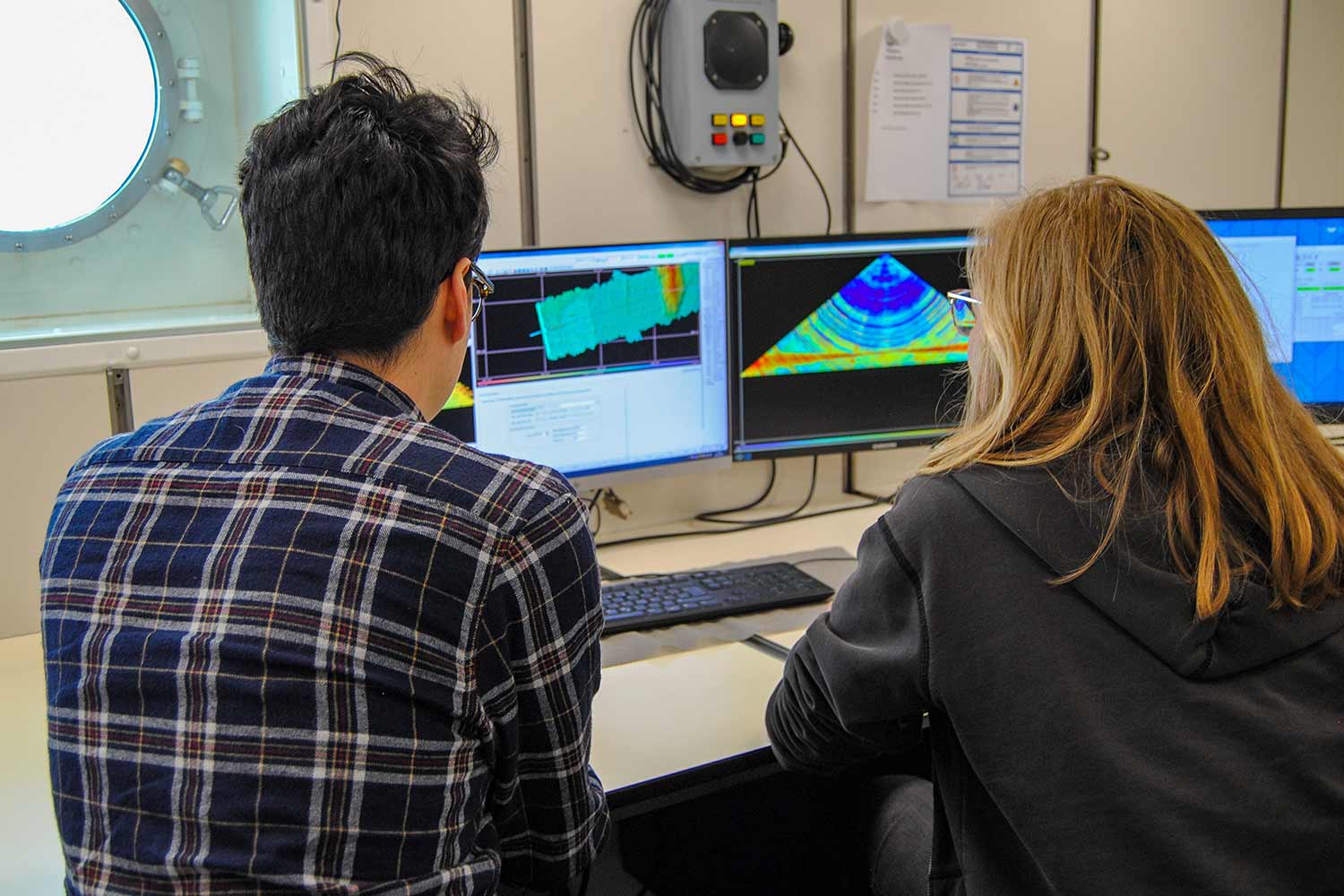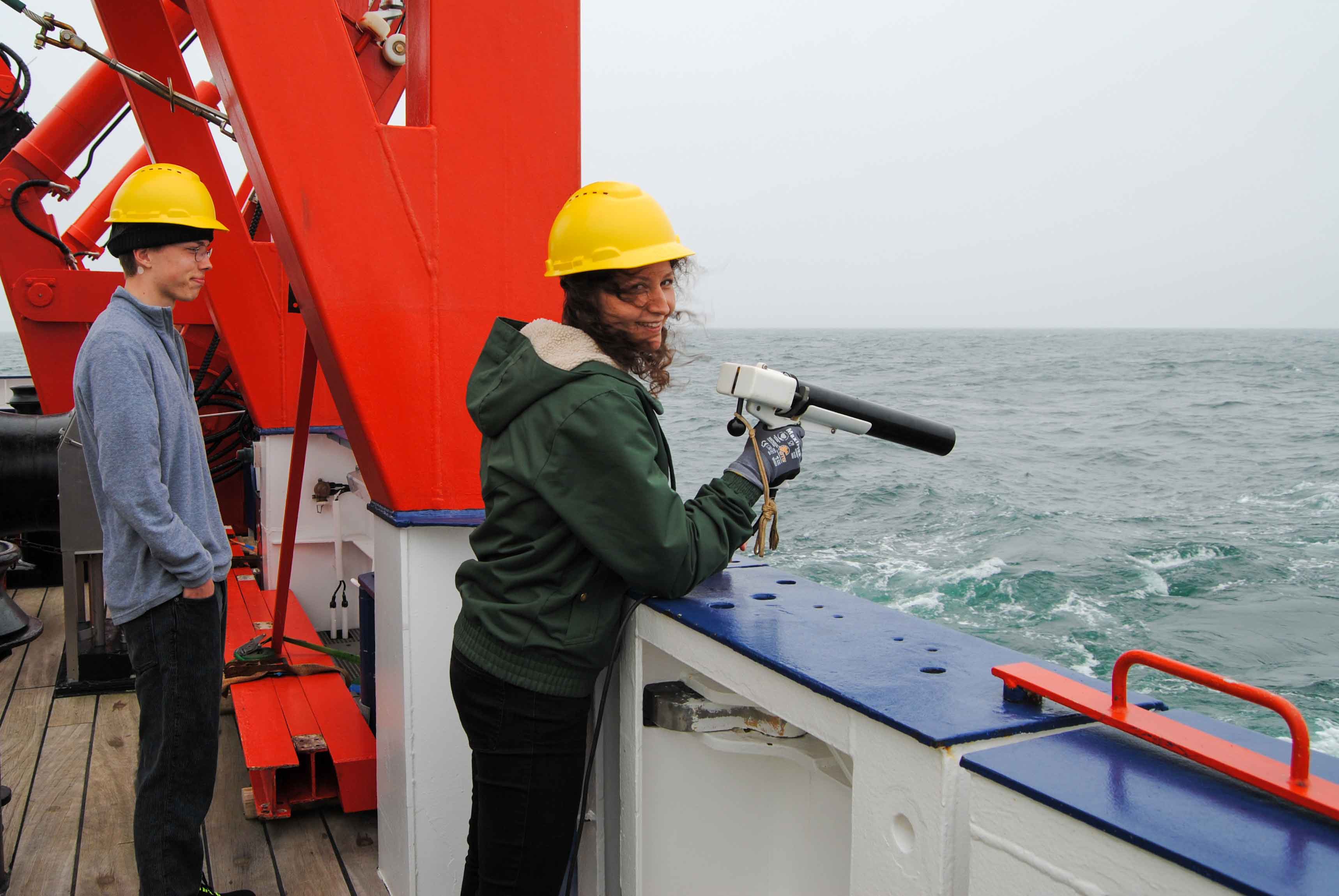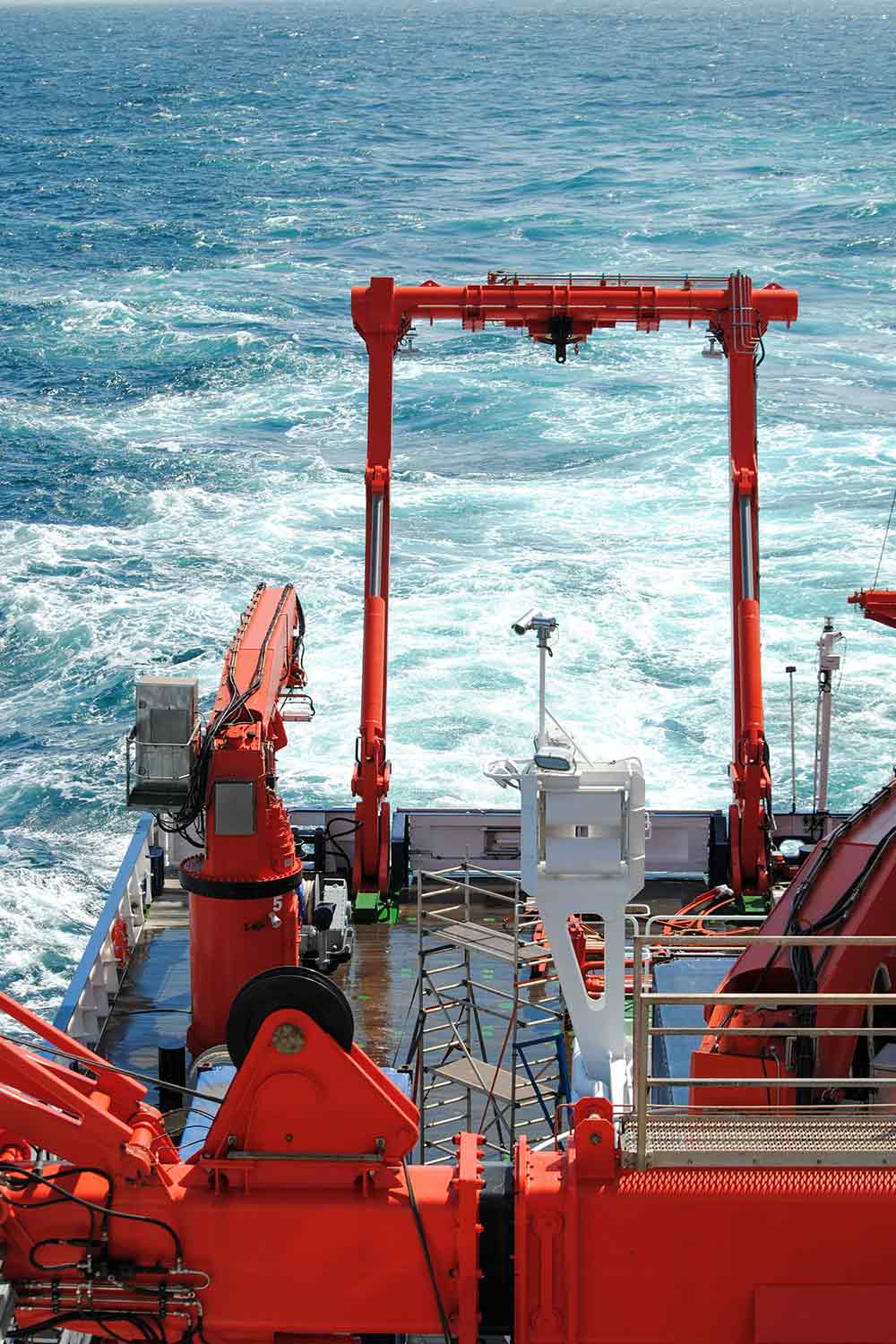(english version below)
Am 12. Juni, nach 10 Tagen Hotelquarantäne und zwei negativen PCR-Tests, hieß es für uns: „Leinen los“! Mit dem Forschungsschiff Maria S. Merian starteten wir unsere Reise in Emden, Richtung Nova Scotia. Unsere Forschungsexpedition Novamar MSM101 steht unter der wissenschaftlichen Leitung von Prof. Dr. Ralph Schneider. An Bord leitet er das Team von 17 Wissenschaftler:innen bzw. Student:innen. Vor der Ostküste Kanadas soll anhand der von postglazialen und holozänen Sedimentkernen die Klimavariabilität der letzten ca. 19.000 Jahren rekonstruiert werden.
Auf diesem Blog wollen wir euch wöchentlich über den Fortschritt unserer Reise auf dem Laufenden halten. Seither sind wir bereits knapp eine Woche auf hoher See und es ist einiges passiert. In den folgenden Logbucheinträgen könnt ihr den bisherigen Ereignissen folgen:
Emden, Freitag, 11.06.: Nach dem Bustransfer vom Quarantänehotel in Varel zum Hafen in Emden haben wir endlich das Schiff betreten können und unsere Kabinen bezogen.
Emden, Samstag, 12.06: Am frühen Morgen hat die Maria S. Merian abgelegt und die Reise MSM101 begonnen. Den Tag über haben die verschiedenen Teams ihre Arbeitsstationen aufgebaut. Wellen von etwa 2 Metern Höhe stellten für uns die erste Herausforderung beim Arbeiten an Bord dar.
Ärmelkanal, Sonntag, 13.06: Beim Frühstück und ruhiger See erhielten wir den ersten Blick auf die Dover-Kreidefelsen Englands. Bald beginnt das Team der Hydroakustik mit der Arbeit.

Atlantik, Dienstag 15.06.: Heute früh wurde das Multibeam System bei laufender Fahrt in Betrieb genommen. Das Multibeam Fächerecholot sendet Schallwellen in Form eines Fächers Richtung Meeresboden aus. Zur Berechnung der Wassertiefen wird die Zeit verwendet, die die Schallwellen benötigen, um vom Meeresboden reflektiert zu werden und zum Empfänger am Schiff zurückzukehren. Um eine akkurate Abbildung des Meeresbodens zu gewährleisten, muss ein Schallprofil der Wasserschichten erstellt werden. Für diese Kalibrierung wurde eine XSV-Sonde vom Schiffsheck zu Wasser gelassen. Beim Absinken misst die Sonde die Schallgeschwindigkeit der unterschiedlichen Wassermassen über die Tiefe.
Bereits während der Fächerlot-Messungen können wir 3D-Modelle des Ozeanbodens erstellen. Die gesammelten Daten werden der DAM (Deutsche Allianz für Meeresforschung) übermittelt und dienen gleichzeitig einem globalen Programm zur Kartierung des Meeresbodens.
Seit Beginn der Datenerfassung beobachtet das Team der Hydroakustik die Aufzeichnungen, um mögliche Störungen frühzeitig zu erkennen. Damit die Überwachung rund um die Uhr realisiert werden kann, wurde ein vierstündiges Schichtsystem eingeführt.


Atlantik, Freitag 18.06: Wir befinden uns nach wie vor im Transit zu unserem Arbeitsgebiet vor Nova Scotia, welches wir voraussichtlich am Dienstag den 22. Juni erreichen werden. Die Datenerfassung der Hydroakustiker:innen verläuft bisher problemlos und die Arbeit der anderen Teams ist angelaufen. Die Ozeanograph:innen Paula und Peter haben sich mit dem CTD-Gerät vertraut gemacht und dieses auf die bevorstehenden Arbeitseinsätze vorbereitet, ebenso bereitet das Geologie-Team die Probennahmeprotokolle vor.
Nach einer Woche haben wir uns auch an den täglich wechselnden Seegang gewöhnt, welcher zu Beginn den ein oder anderen Gemütszustand strapaziert hatte. In den letzten sieben Tagen ist unsere junge Arbeitsgruppe bereits eng als Team zusammengewachsen.
Falls ihr mehr von uns sehen wollt, schaut gerne auf unserem Instagram Account @expedition.novamar vorbei.

English version
On June 12, after 10 days of hotel quarantine and two negative PCR tests, it was time for us to “cast off”! With the research vessel Maria S. Merian we started our journey in Emden, heading towards Nova Scotia. Our research expedition Novamar MSM101 is under the scientific leadership of Prof. Dr. Ralph Schneider. On board he´s leading the team of 17 scientists and students. At the east coast of Canada, postglacial and Holocene sediment cores will be used to reconstruct the climate variability of the last 19,000 years.
On this blog we want to keep you weekly updated on the progress of our journey. Since then we have been on high seas for almost a week and a lot has happened. In the following logbook entries you can follow the events so far:
Emden, Friday, 11th of June: After the bus transfer from the quarantine hotel in Varel to Emden harbour, we arrived at the ship and organized our cabins.
Emden, Saturday, 12th of June: Maria S. Merian departed in the early morning. Our journey finally started. We used this day to prepare our working spaces, labs and material. Waves of about 2 m height challenged us during work.
English Channel, Sunday, 13th of June: At breakfast and calm sea, we spotted the cliffs of Dover, on the English side of the channel. We expect to start with the hydro-acoustic work soon.
Atlantic, Tuesday, 15th of June: Today the multibeam system was put into operation while the ship was underway. The multibeam echosounder emits sound waves in the form of a fan towards the seabed. The time it takes for the sound waves to reflect at the seabed and return to the receiver is used to calculate the water depth. To ensure an accurate image of the seabed, a sound profile of the water layers is being created. For this calibration, a XSV probe was launched from the stern of the ship. The probe measures the speed of sound through different water masses at a certain depth. During the echosounder measurements we can already create 3D models of the ocean floor. The collected data is transmitted to the DAM (German Alliance for Marine Research) and at the same time will serve a global programme for mapping the ocean floor. Since the beginning of the data collection, the hydro-acoustics team has been monitoring the recordings in order to detect possible disturbances at an early stage. A four-hour shift system was introduced so that the monitoring can be realized around the clock.
Atlantic, Friday, 18th of June: We are still in transit to our work area Nova Scotia, which we expect to reach on Tuesday, 22nd of June. The data collection of the hydroacousticians is going smoothly so far and the work of the other teams has started. The oceanographers Paula and Peter have familiarized themselves with the CTD instrument and prepared it for the upcoming work, as well as the geology team is preparing the sampling protocols.
After a week, we have also become accustomed to the daily changing sea state, which at the beginning had strained one or the other state of mind. In the last seven days our young working group has already grown together closely as a team.
If you want to see more of us, feel free to check out our Instagram account @expedition.novamar.
Hi, this is a comment.
To get started with moderating, editing, and deleting comments, please visit the Comments screen in the dashboard.
Commenter avatars come from Gravatar.